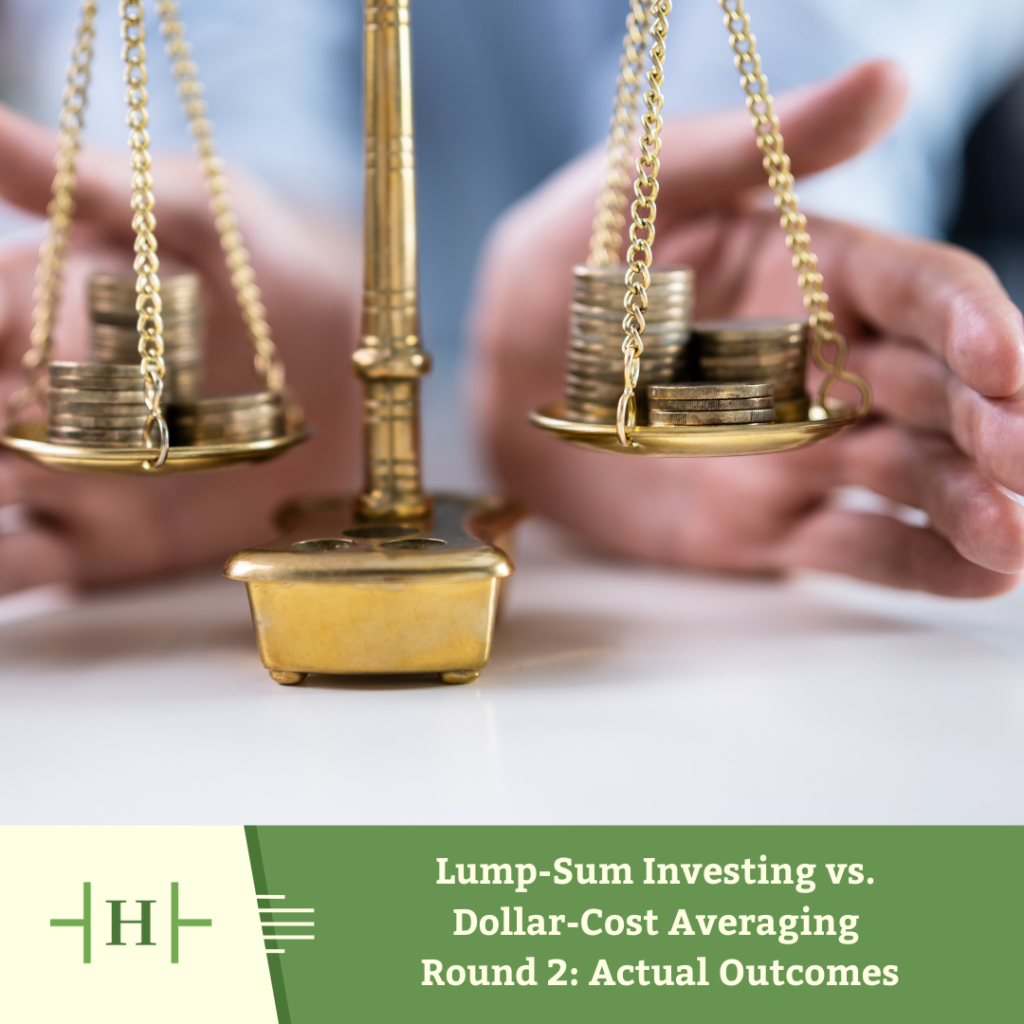October 7, 2024


In a recent piece, we explored how to invest available cash: Should you invest it all right away as a lump sum? Or are you better off wading in more gradually with dollar-cost averaging?
In round one, we discussed why lump-sum investing is generally expected to generate the highest returns over time. In markets that have risen more, and more often than they’ve fallen, the sooner you deploy your investable assets, the more time they have to grow.
That said, general rules don’t always apply to you. Let’s look at when dollar-cost averaging may be preferred after all.
Considering the Big Picture
First, it’s important to emphasize:
No matter which way you go (lump sum vs. dollar-cost averaging), it’s unlikely to matter nearly as much as whether you invest efficiently to begin with.
By this, we mean:
If you can do all that, exactly how and when you add new money is less significant. The best approach for you is the one that helps you best adhere to these sensible investment practices.
Considering Your Best Interests
So, next, let’s turn away from theoretical returns and toward the main event: You.
Behavioral finance informs us, we are all subject to cognitive biases that subconsciously influence our decisions. As such, even if a strategy returns X% over Y amount of time, you’re unlikely to receive those returns if the strategy is not a good fit for your circumstances.
Let’s illustrate. Imagine you received $24,000 to invest in early March 2020, just as the COVID-19 pandemic took off, and markets were beginning to falter. If you had decided to invest your lump sum right away, you would have had to soon watch it plummet amidst popular press outcries about “the fastest bear market ever,” “the worst first quarter in history,” and “the most volatile month on record.”
It just so happens, you would have come out okay had you stuck with it through the next two quarters. But nobody knew that at the time; things could have easily gotten worse instead.
Either way, would you really have been able to stay the course with a March 1 lump sum decision? Or would you have leaped back out – or never jumped in to begin with? If you had decided to wait until the market seemed more stable, you’d probably still be waiting.
If fully investing in early March would have been too daunting, dollar-cost averaging might have been better than waiting for an “all clear” signal that has yet to arrive. By setting up an automatic schedule for dripping your $24,000 into the market over time, you could have benefitted from some of the market recovery that has taken place, while shielding some of your wealth had the market instead continued to decline.
Intentions vs. Outcomes
In short, lump-sum investing is generally expected to deliver better long-term returns if you are willing and able to stick with the strategy. But dollar-cost averaging may be the better choice if a more cautious (but still brave!) approach helps you better adhere to the larger, more important tenets of efficient investing.
So, how do you decide? That’s where Hiley Hunt comes in as your fiduciary advisor. We can help you objectively assess the personal and financial trade-offs involved based on the best information available at the time. We can then help you stick to your well-devised plans over time and through life’s uncertainties.
By choosing the investment strategy that makes the most sense for you and your temperament, you stand the best chance of achieving your financial goals, no matter what the markets have in store for us next.